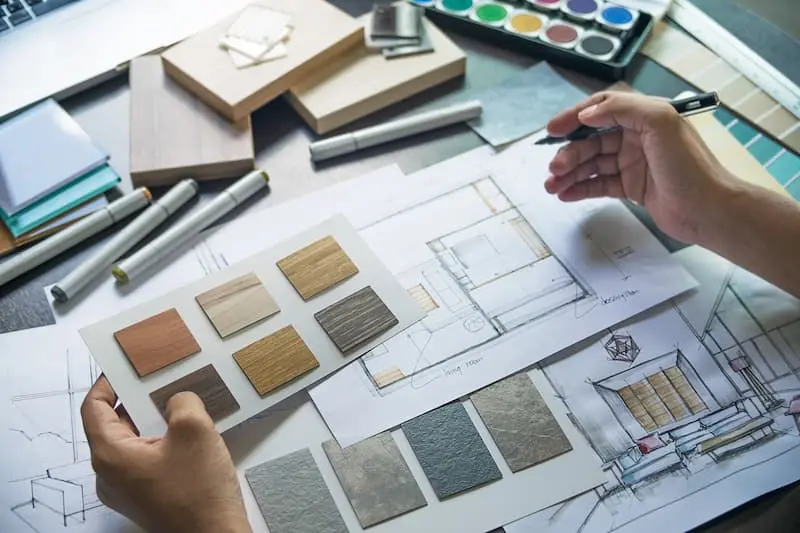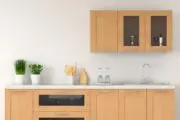As a design-savvy house hunter, you may already have a good idea of what you like, and what to include on your wish list. Do you need an interior designer for your new build?
Do you absolutely need an interior designer? No. If you have the knowledge and the time to dedicate, going DIY is an option. However, given the number of decisions that need to be made with a new build, design support, whether from an interior designer or from a design consultant offered by the builder at the design studio, is generally a wise choice.
The level of design support you might require will largely be dictated by the type of new build home you choose: custom, semi-custom or production.
Depending on the level of available customization, you have a potential myriad of decisions to make, all of which carry weight in the functionality and aesthetic of your new home. That means, as a homeowner, getting the support you need to make those decisions that will combine to create a home you love is crucial.
There are many benefits to working with an interior designer, from offering an educated opinion on functionality, to looking at the overall design through the lens of continuity, to being able to source items not readily available to the public.
Custom and semi-custom homes involve numerous decisions
With a custom home, you are literally starting from scratch. You need to design the floor plan, as well as every finish and feature. Your builder may have the skill set to supply the floor plan, but it is common to engage an architect as well. Additionally, it’s a wise investment to work with an interior designer to round out your design-build team.
You should hire your interior designer at the beginning of the process, for the sake of efficiency and design continuity.
With endless options to modify your home, limited only by your budget, guidance from an experienced interior designer is your best bet to ensuring that your home is built with a function-first philosophy that matches your lifestyle.
“Interior designers who specialize in construction have a knowledge base that enables them to look holistically at a plan and remove deficiencies replacing them with spaces that function at the highest level,” says Susan Hill, principal and owner of Susan Hill Interior Design.
At the beginning of the process, “I look at every way to create as many functions as possible in every area of the home. Aesthetics don’t come into play for us until after we have completed our schematic drawings reflecting all changes we have made to the home,” she says.
With a spec or semi-custom home, the floor plan might be pre-determined, but you may have to opportunity to make modifications, and you typically select finishes and some features as well.
For both housing types, an interior designer saves time and money by streamlining processes and narrowing down selections, based on an understanding of what a homeowner both needs and wants from their home.
“We are experts at drilling down to what the client doesn’t like and what they are drawn to. This enables us to have a few meetings to pull that end of things together. We do all of this before ground is broken, have all decisions made and provide a construction binder on site to eliminate confusion and answer questions efficiently,” says Hill.
“All of this creates a unique home for a client, the highest possible function in everything from their rooms to their cabinets and closets which saves them time and money on their build and results in a home they could never execute on their own,” she says.
Do I need an interior designer with a production home?
If you are purchasing a production home, your builder typically has a design studio, with a selection of finishes and materials, with builder-standard choices and a range of upgrades.
Floor plans are standardized, and homeowners are presented with real-life inspiration with model homes, built with available finishes and features from the builder’s design studio.
Some of the design work has already been done with a production home, as choices have been narrowed down already for homeowners. With floor plans pre-designed, there may be some customization options available, but they generally are a small tweak here and there – a far cry from designing a custom home from the ground up.
Many production builders offer support in the design center through a design consultant, who meets at regular intervals with homeowners to work their way through the selection list, offering guidance and advice for the options offered.
The process varies by builder, but design center consultants collaborate with homeowners to determine style preferences, functional needs and budget for home upgrades to be able to suggest the most appropriate options for homeowners to choose from the builder’s selections.
Lisa McClelland, senior vice president of Design Studios with Toll Brothers, says, “We begin with providing a style survey, which helps homebuyers consider what looks, color palettes, and design styles they prefer. At the completion of the brief survey, they receive one of our beautiful Designer Appointed Collections as a recommended starting point for their consideration.”
“Each homebuyer then can start their selections process with a style consultation appointment with a professional design consultant,” she says. “The design consultant discusses the survey results with the home buyer and uses this information as the foundation for the design work to personalize each area of the home.”
Typically, the selection process unfolds over a series of appointments, where homeowners are encouraged to be tactile with selections, and to consider different combinations, with advice from the builder’s design consultant.
With fewer choices available compared to a custom or semi-custom home, and in-house support from a design consultant, do you really need the services of an interior designer with a production home?
Hill says that there is an upside to having another set of trained eyes applied to the process with an interior designer.
“Working with a designer on a production home is still a benefit. Within the options available, a designer can help ensure a client is achieving the end result they really want,” she says.
It can be helpful for homeowners who might be considering upgrading or modifying features and finishes down the road as a DIY, to work with an interior designer to help prioritize projects and help choose finishes accordingly.
“There are a lot of limitations within the production home industry, but the designer can bring in subcontractors after move to help create custom elements to set the home apart from the others in that neighborhood,” says Hill.









